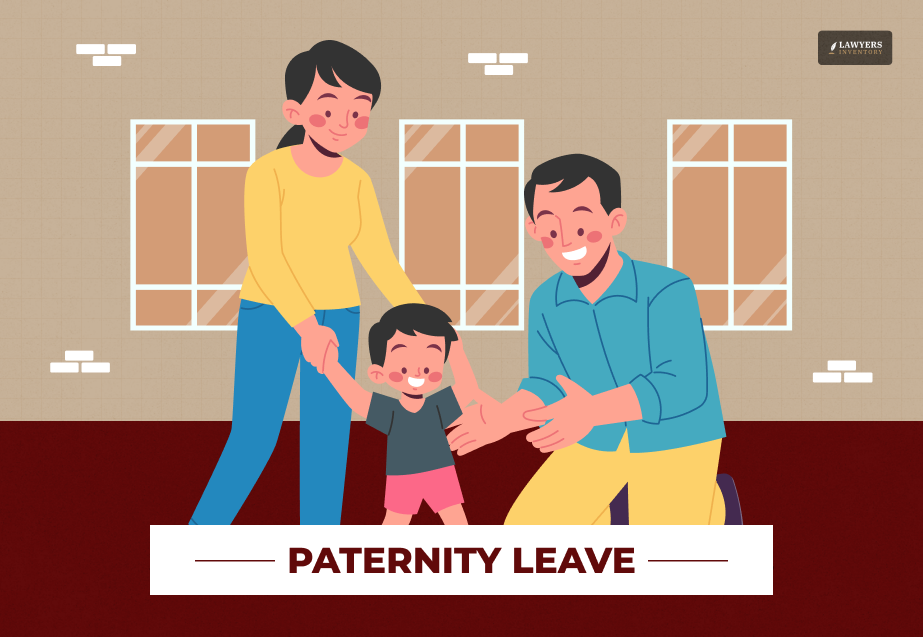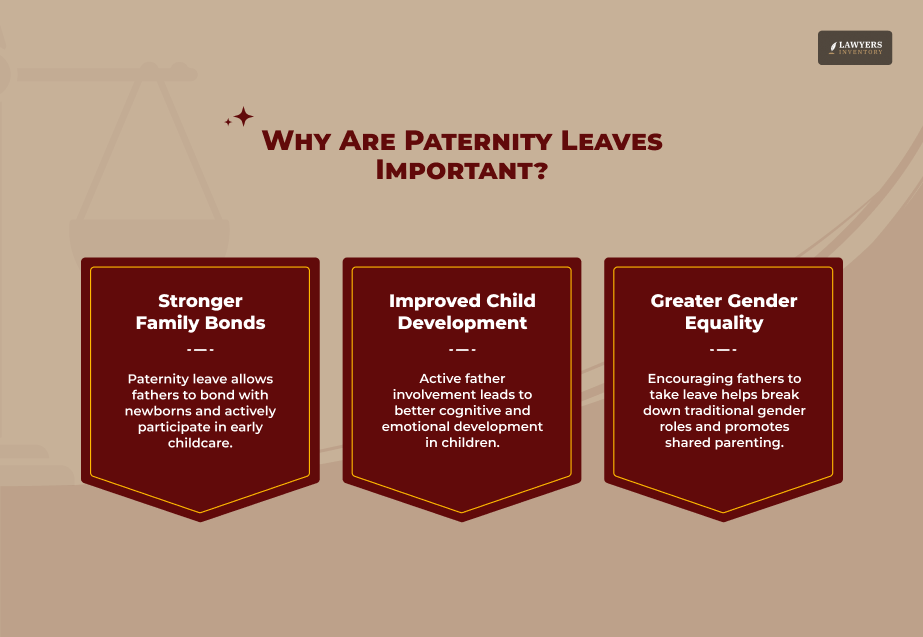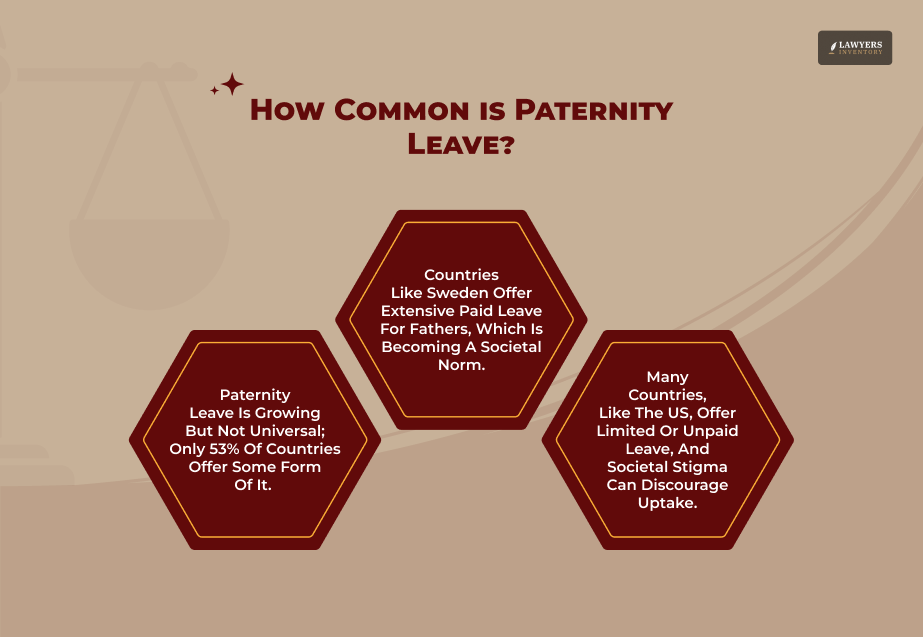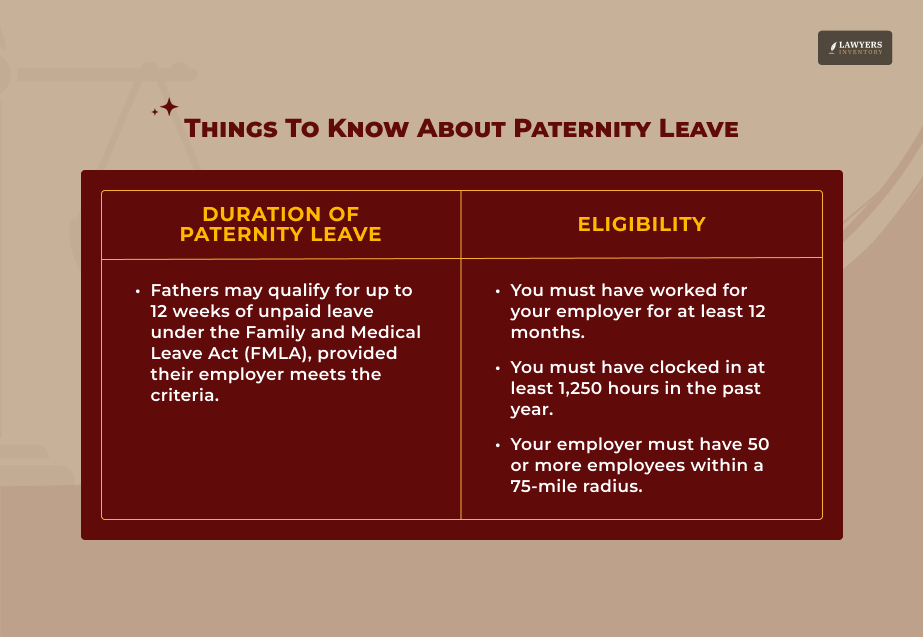
In recent years, paternity leave has become a hot topic, and for a good reason. With evolving workplace dynamics and a growing emphasis on gender equality, more fathers are stepping up to share caregiving responsibilities.
According to a Deloitte study, 77% of fathers believe paternity leave is critical for bonding with their child. Additionally, the International Labour Organization (ILO) reports that 94 out of 185 countries offer some form of parental leave.
While these numbers sound promising, the reality varies widely depending on where you live and the laws governing your workplace.
The increasing demand for parental leave isn’t just a win for families; it also boosts workplace productivity and employee morale. Studies show that fathers who take paternity leave are more engaged at work, making this a win-win situation.
However, navigating the legalities of parental leave can feel overwhelming. What are your rights? Are you eligible for paid leave? And what happens if your employer doesn’t comply with paternity leave policies?
In this article, I will break it all down for you in simple terms so you can understand your rights, the process, and how to make the most of your paternity leave. So, if that is what you want to know, you are in the right place!
What is Paternity Leave?

It is a period of time that fathers are allowed to take off from work after the birth or adoption of a child. It’s designed to help fathers bond with their newborns and support their partners during an important yet demanding phase.
Unlike maternity leave, which is often mandatory in most countries, paternity leave is still evolving as a workplace policy.
The duration and conditions of it varies significantly across the globe. Some companies and countries offer a few days of leave, while others provide weeks or even months. Moreover, this can be either paid or unpaid, depending on the legal framework and company policy.
In countries like Sweden and Iceland, paternity leave is encouraged through generous benefits. In contrast, fathers in countries like the United States often have to rely on unpaid leave under the Family and Medical Leave Act (FMLA).
Why does it matter? Studies show that fathers who take time off develop stronger bonds with their children and contribute more actively to household responsibilities.
It also reduces stress for new mothers, creating a more balanced family dynamic. Despite these benefits, the accessibility of it largely depends on your location, employer, and local laws.
Are Paternity Leaves Common?

Paternity leave is becoming increasingly common, but it’s far from universal. In fact, it remains a luxury in many parts of the world.
According to the International Labour Organization (ILO), only 53% of countries provide any form of paternity leave, and the length and pay differ widely.
In countries like Norway, Sweden, and Finland, it is not just common—it’s a societal norm. Fathers are encouraged to take several weeks off, with governments providing substantial financial support.
For example, in Sweden, parents can share 480 days of paid leave, and 90 of those days are exclusively reserved for fathers. This ensures dads actively participate in childcare.
On the other hand, countries like the United States lag behind. While the FMLA allows eligible fathers up to 12 weeks of unpaid leave, it’s not a feasible option for many who can’t afford to take unpaid time off. Consequently, only a small percentage of American fathers utilize this benefit.
Even in countries where paternity leave is offered, societal stigma often discourages fathers from taking it. Some fear being judged by their employers or peers, while others worry it might harm their career progression.
Yet, the tide is turning. Global studies reveal that millennial and Gen Z fathers prioritize family time and increasingly demand better leave policies.
Corporate giants like Google, Netflix, and Microsoft are also setting examples by offering generous paternity leave policies.
For instance, Netflix provides up to a year of paid parental leave, which can be split between parents. These policies not only attract talent but also foster loyalty and satisfaction among employees.
Paternity Leaves in the USA— How Does THAT Work?
In the United States, it is still a work in progress. Unlike many developed countries, the U.S. does not mandate paid paternity leave at the federal level. Instead, fathers often rely on unpaid leave under the Family and Medical Leave Act (FMLA).
FMLA allows eligible employees to take up to 12 weeks off, but there’s a catch—it’s unpaid and only applies to companies with 50 or more employees. That leaves nearly half of the private-sector workforce without access to even this basic benefit.
The numbers highlight the gap. According to the Bureau of Labor Statistics, only 25% of private-sector workers in the U.S. had access to paid family leave in 2023, and this includes both maternity and paternity leave. Unsurprisingly, many fathers find it financially impossible to take time off.
On the bright side, some states have taken the lead. California, New York, New Jersey, and Washington offer paid family leave programs that include paternity leave.
For instance, companies like Microsoft, Netflix, and Twitter also provide generous paid leave policies, with some offering as much as 16 weeks.
While progress is slow, the conversation is gaining momentum. Advocates continue pushing for better policies, making paternity leave a growing priority in the U.S. workplace.
Things You Need to Know If You’re Taking Paternity Leave

This can be an exciting yet unfamiliar territory for many fathers. Understanding the rules and preparing ahead can make the process smoother. Here’s a breakdown of what you need to know.
How Long is Paternity Leave?
The length of the leave depends on where you live and your employer’s policies. In the U.S., there’s no federal mandate for paid paternity leave.
However, fathers may qualify for up to 12 weeks of unpaid leave under the Family and Medical Leave Act (FMLA), provided their employer meets the criteria.
Keep in mind that not all employers are required to comply with FMLA, and many fathers can’t afford to take unpaid time off.
Some states, like California, New York, and New Jersey, offer paid family leave programs, allowing fathers to take anywhere from 4 to 12 weeks off with partial pay.
On a global scale, countries like Sweden, Norway, and Iceland lead the way, offering generous paternity leave policies of up to 90 days or more with financial support.
Additionally, if your employer offers paid parental leave, check your company’s handbook or HR policies for the specific duration. Many companies provide anywhere between 1 to 16 weeks, depending on their benefits package.
Who is Eligible for Paternity Leave?
Eligibility for paternity leave varies depending on your location, employer, and employment status. Under FMLA, to qualify for unpaid leave:
- You must have worked for your employer for at least 12 months.
- You must have clocked in at least 1,250 hours in the past year.
- Your employer must have 50 or more employees within a 75-mile radius.
For state-paid family leave programs, eligibility rules differ. For example, in California, you must have earned a minimum amount in the previous base period to qualify for partial wage replacement.
If your employer offers paternity leave benefits, eligibility criteria might include being a full-time employee or having worked with the company for a specific period. Always check with your HR department to understand your employee rights.
How to Prepare for Paternity Leave?
Preparing for paternity leave requires careful planning to ensure a seamless transition at work and home. Here are some steps to help you get started:
- Understand Your Rights: Research your company’s paternity leave policies and state or federal programs you might qualify for. Therefore, knowing your entitlements will help you make informed decisions.
- Discuss With Your Employer: Notify your employer well in advance about your leave plans. Submit the necessary paperwork and clarify any doubts about the duration and pay.
- Plan Finances: If your leave is unpaid or partially paid, review your budget and savings to prepare for the financial impact.
- Coordinate With Your Partner: Align your leave plans with your partner’s needs. Sharing responsibilities can make the transition smoother for everyone.
- Prepare at Work: Delegate tasks and ensure a smooth handover to colleagues. Furthermore, document ongoing projects to make it easier for your team to manage during your absence.
What To Do If You are Not Getting a Paternity Leave?
Not all employers offer paternity leave, and navigating this challenge can be frustrating. However, there are ways to address the situation and ensure you get the support you need. Here’s what you can do:
1. Understand Your Rights
Start by researching your rights under local, state, or federal laws. In the U.S., fathers working for eligible employers may qualify for unpaid leave under the FMLA.
While FMLA doesn’t mandate paid leave, it guarantees up to 12 weeks of unpaid, job-protected leave for fathers who meet the eligibility criteria.
Some states, like California, New York, and Washington, have their own paid family leave programs that cover paternity leave.
2. Speak With Your Employer
If your workplace doesn’t offer paternity leave, have an open and respectful conversation with your employer or HR department.
Explain why taking leave is important for your family. Some employers may allow you to use other types of leave, such as vacation days, sick leave, or unpaid personal leave.
3. Explore Flexible Work Arrangements
If paternity leave isn’t an option, ask about flexible work arrangements. You could request reduced hours, work-from-home options, or schedule adjustments to spend more time with your newborn.
4. Seek Legal Advice
If you believe your employer is violating your rights under laws like FMLA, consult a labor attorney. They can help you understand your options and take the necessary steps to address the issue.
5. Advocate for Change
If your company doesn’t offer paternity leave, consider advocating for better family leave policies.
Share data on the benefits of paternity leave, such as increased employee satisfaction, productivity, and retention. Many companies have updated their policies in response to employee feedback.
While it may take some effort to secure time off, taking steps to explore your options and assert your rights can make a big difference.
Top Countries That Offer Paternity Leave
Paternity leave policies vary across the globe, with some countries setting gold standards for supporting fathers. Let’s take a look at the countries leading the way:
1. Sweden
Sweden is a pioneer in parental leave. Fathers can take up to 90 days of paid paternity leave, with the government covering 80% of their salary. Parents also share 480 days of leave, making Sweden one of the most family-friendly countries.
2. Iceland
Iceland offers fathers three months of paid leave as part of its shared parental leave policy. Fathers receive 80% of their average salary, ensuring financial security while bonding with their children.
3. Norway
Fathers in Norway can take 15 weeks of leave if shared with the mother, with 100% salary coverage. Norway’s focus on gender equality makes paternity leave a priority.
4. Japan
Japan recently revamped its parental leave policies, granting fathers up to 12 months of paid leave. This makes Japan one of the most generous countries for fathers.
5. Finland
Fathers in Finland are entitled to 54 days of paid leave. Additionally, parents can also share an additional 164 days of leave, ensuring both parents can participate equally in childcare.
6. Estonia
Estonia offers fathers 30 days of fully paid paternity leave, along with generous shared parental leave benefits.
These countries recognize the importance of paternity leave for fostering stronger family bonds and promoting gender equality. While progress is slow in many other nations, these examples set a benchmark for what’s possible when governments and employers prioritize families.
Read Also:
- Why You Need an Adoption Lawyer for a Smooth Adoption Process
- Single Parent Family and Child Support: What You Don’t Know But You MUST
- Can a Birth Defect Lawyer Help Uncover the Truth Behind Your Child’s Condition?










0 Reply
No comments yet.